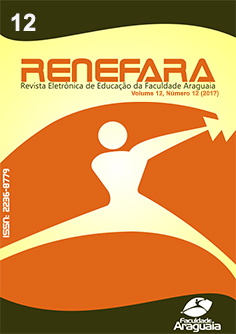WATER USE FROM THE CONDENSATION PROCESS OF AIR CONDITIONING APPLIANCES IN A PUBLIC BUILDING
Keywords:
Water scarcity, Air-conditioning apparatus, Environment.Abstract
In the twentieth century it was common to have reports in the technical literature that water was a finite good. However, the reality is that in several states, water supply is threatened by both quantity and quality problems. The use of water from the condensation process of air conditioners can reduce the use of drinking water for less noble purposes. The present paper has the objective of evaluating the use of water from the air conditioning drains in the Center of Management of Physical Space of the Federal University of Goiás for non potable purposes. It was evaluated split air conditioning of 12,000 and 60,000 BTUs in the dry and rainy seasons in the years of 2015 and 2016. In the physico-chemical analyzes of the samples the parameters were evaluated: total alkalinity, carbonate, hydroxide, alkalinity, chlorides, carbon dioxide , copper, conductivity, hardness, sulfur, iron, taste and odor, apparent color, consumed oxygen, pH, dissolved solids and turbidity as recommended by the Standart Methods for Examination of Water and Wastewater of the America Water Works Association and the and the Environmental Sanitation Technology Company of São Paulo. The volume of water produced in the dry and rainy seasons was 1,591 and 2,713.96 l / month, respectively. The monthly financial savings are still small, and the result of the laboratory analysis of the physical-chemical parameters made it impossible to use them for drinking purposes.Downloads
Published
Issue
Section
License
The copyright of the published articles will be transferred to the Uniaaraguaia Magazine, allowing its subsequent reproduction as transcription and with due citation of source. In the event of acceptance and before the publication of the article, the plaintiff (s) shall write a statement formally transferring copyright to the magazine.
The author may also print and distribute copies of his article, provided that he mentions that the rights belong to the Uniaaraguaia Magazine.
Author rights include the right to reproduce in full or partly by any means, distribute this article, including figures and photographs.
By submitting originals to the Uniaaraguaia magazine, the author or authors express agreement with the following terms:
a) Authors maintain copyright and grant Uniaraguaia magazine the right of first publication, with the work simultaneously licensed under the Creative Commons Attribution license that allows the sharing of work with recognition of the authorship and initial publication in this magazine.
b) Authors are authorized to assume additional contracts separately, for non-expiration distribution of the work version published in this magazine (eg publish in institutional repository or as book chapter), with recognition of authorship and initial publication in this journal.
c) Authors are allowed and are encouraged to publish and distribute their work online (eg in institutional repositories or on their personal page) to any point before or during the editorial process, as this can generate productive changes as well as increase the impact and citation of published work.

